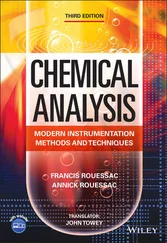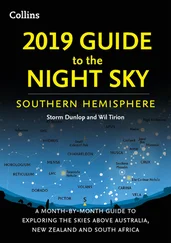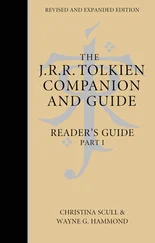1 Cover
2 Important Instructions and Limitations Important Instructions and Limitations This guidebook contains information on hazardous chemicals and recommendations for the selection of chemical protective clothing materials based on published and unpublished scientific test data. Most of the chemical resistance data are generated in accordance with the standardized test methods. NO attempt has been made to ensure either the accuracy or precision of these compiled data. The Guide also does not take into consideration the intended use or physical demands (resistance to tear, puncture resistance, etc. or heat and flames) of the chemical protective clothing. These factors are critical in the selection process. A person competent in the selection of chemical protective clothing such as an Industrial Hygienist or a Safety Professional with training in this area ensures the selections based on this Guide are carried out properly. The Guide only addresses chemical protective clothing against chemical hazards and exposures. Clothing without barrier materials such as laboratory coats are not included in this Guide.
3 Preface Preface The revised and updated version of the sixth edition of the Quick Selection Guide to Chemical Protective Clothing includes additional selection recommendations from a large number of new test data. We urge the users of the Guide to get familiar with the new products and the revised names of existing products on the market listed in Sections II and VII before going into the selection process. The chemical index includes many new chemicals or mixtures of chemicals, additional synonyms, CAS numbers, and risk codes to alert the user, which may be of most concern for user protection. The Trade Name Table contains 13 generic materials listings and 30 proprietary composition materials vs. a test battery of 21 chemicals. The Trade Name Table includes several multilayers of generic materials not included in the Master Chemical Resistance Table. The color-coded recommendations in the Master Chemical Resistance Table still contain 27 representative barrier materials. However, one glove material and one suit material have been replaced by two new products, that is, Kemblok® and Chemprotex® 300. We believe these barrier listings include a wide range of gloves and suits on the market today. We hope that this revised and updated edition will receive the same enthusiastic response as the prior editions. The purpose is to arm supervisors, industrial hygiene and safety professionals; hazardous materials spill responders, and others with sufficient knowledge and insight in selecting and using the right CPC. Selecting the most appropriate CPC can be an effective and efficient action preventing illnesses and injuries from hazardous chemical exposure where other control methods are not feasible. Write to us if you have any questions or comments on this Guide. KRISTER FORSBERG krister.forsberg@gmail.com ANN VAN DEN BORRE avandenborre@gmail.com NORMAN HENRY III shbp65@comcast.net JAMES P. ZEIGLER jim@jpzeigler.com
4 SECTION I: Introduction to the Quick Selection Process SECTION I Introduction to the Quick Selection Process The intent of the Quick Selection Guide to Chemical Protective Clothing is to assist workers, supervisors, safety and health professionals, spill responders, industrial hygienists, and others in the initial selection of protective clothing materials against specific chemical challenges on the job. This is accomplished by use of the color-coded tables, which summarize the chemical breakthrough performance of 27 common barrier materials against approximately 1000 chemicals organized in 98 chemical classes based on functional groups and 10 categories of multicomponent/commercial chemicals.
How to Use This Guide
5 SECTION II: Selection and Use of Chemical Protective Clothing Chemical Resistance of Protective Clothing: What Does It Mean and How to Evaluate It Standards and Requirements Related to CPCs The Selection Process Correct Use, Care, Maintenance, and Disposal of CPCs Create Your Own Checklist Checklist for Selection, Use, Care and Maintenance, and Disposal of Chemical Protective Clothing
6 SECTION III: Chemical Index Chemical Class Numbers Chemical Names Synonyms Chemical Abstract Service Number: CAS # Risk Codes Chemical Warfare Agents
7 SECTION IV: Selection Recommendations Color Codes Used in the Tables Introduction to the Trade Name Table Important Notes Barriers Related to the Master Chemical Resistance Table Important Notes Related to the Master Chemical Resistance Table
8 SECTION V: Glossary
9 SECTION VI: Standards for Chemical Protective Clothing ASTM Standards (http://www.astm.org/COMMITTEE/F23.htm) NFPA Standards (http://www.nfpa.org) EN Standards (http://www.cen.eu) ISO Standards (http://www.iso.org)
10 SECTION VII: Manufacturers of Chemical Protective ClothingIntroduction
11 End User License Agreement
1 Chapter 1 Figure 1. What barrier material offers the best chemical resistance?
2 Chapter 2 Figure 1. Penetration. Figure 2. Degradation. Figure 3. Permeation. Figure 4. Permeation test cell schematic. Figure 5. An illustration of two types of permeation behaviors from two diff... Figure 6. The CE mark with the four digits must be visible on all PPE produc... Figure 7. A scheme overviewing the process of selection, use, care, and disp...Figure 8. Breakthrough time changes in function of barrier thickness.
1 Cover
2 Table of Contents
3 Begin Reading
1 iii
2 iv
3 vii
4 ix
5 1
6 2
7 3
8 5
9 6
10 7
11 8
12 9
13 10
14 11
15 12
16 13
17 14
18 15
19 16
20 17
21 18
22 19
23 20
24 21
25 22
26 23
27 24
28 25
29 26
30 27
31 28
32 29
33 31
34 32
35 33
36 34
37 35
38 36
39 37
40 38
41 39
42 40
43 41
44 42
45 43
46 44
47 45
48 46
49 47
50 48
51 49
52 50
53 51
54 52
55 53
56 54
57 55
58 56
59 57
60 58
61 59
62 60
63 61
64 62
65 63
66 64
67 65
68 66
69 67
70 68
71 69
72 70
73 71
74 72
75 73
76 74
77 75
78 76
79 77
80 78
81 79
82 80
83 81
84 82
85 83
86 84
87 85
88 86
89 87
90 88
91 89
92 90
93 91
94 92
95 93
96 94
97 95
98 96
99 97
100 98
101 99
102 100
103 101
104 102
105 103
106 104
107 105
108 106
109 107
110 108
111 109
112 110
113 111
114 112
115 113
116 114
117 115
118 116
119 117
120 118
121 119
122 120
123 121
124 122
125 123
126 124
127 125
128 126
129 127
130 128
131 129
132 130
133 131
134 132
135 133
136 134
137 135
138 136
139 137
140 138
141 139
142 140
143 141
144 142
145 143
146 144
147 145
148 146
149 147
150 148
151 149
152 150
153 151
154 152
155 153
156 154
157 155
158 156
159 157
160 158
161 159
162 160
163 161
164 162
165 163
166 164
167 165
168 166
169 167
170 168
171 169
Читать дальше
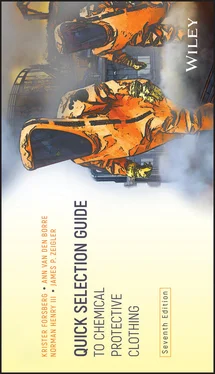


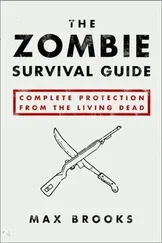

![Евгений Матерёв - Музеи… или вдохновляющая музыка The Chemical Brothers [litres самиздат]](/books/437288/evgenij-materev-muzei-ili-vdohnovlyayuchaya-muzyka-th-thumb.webp)

